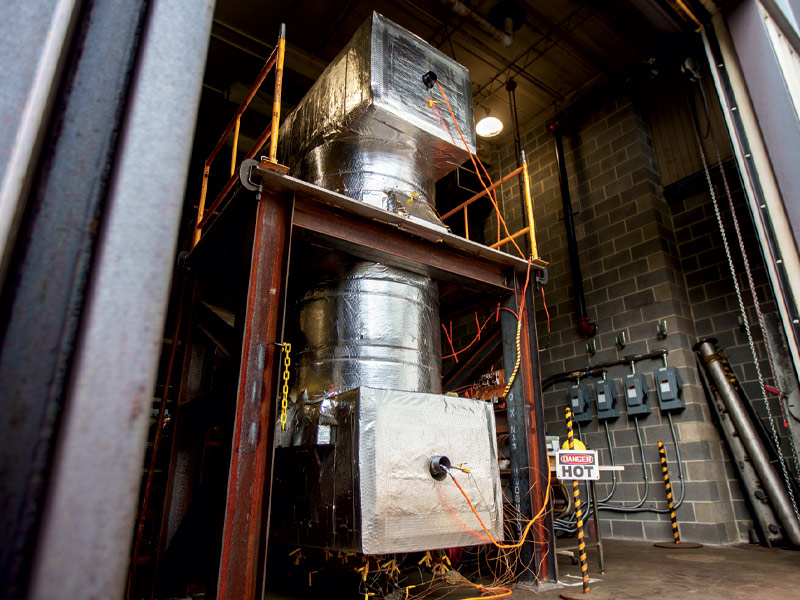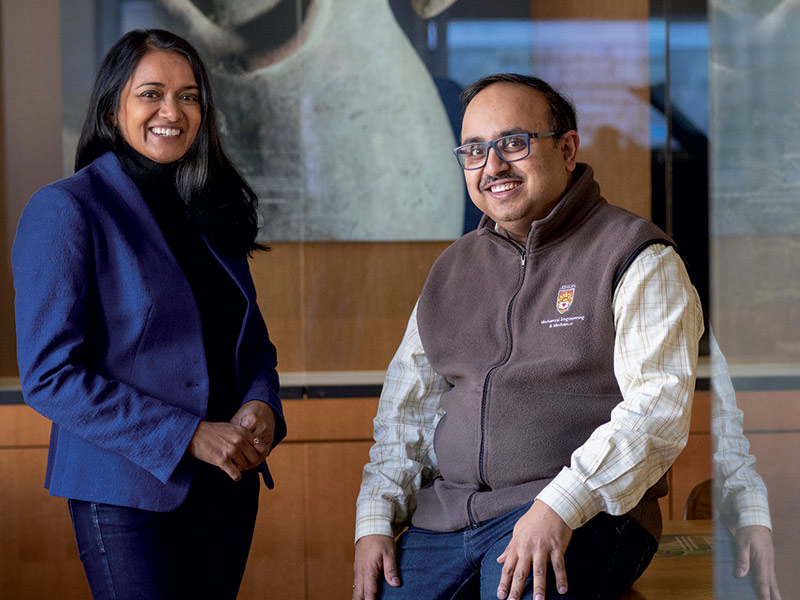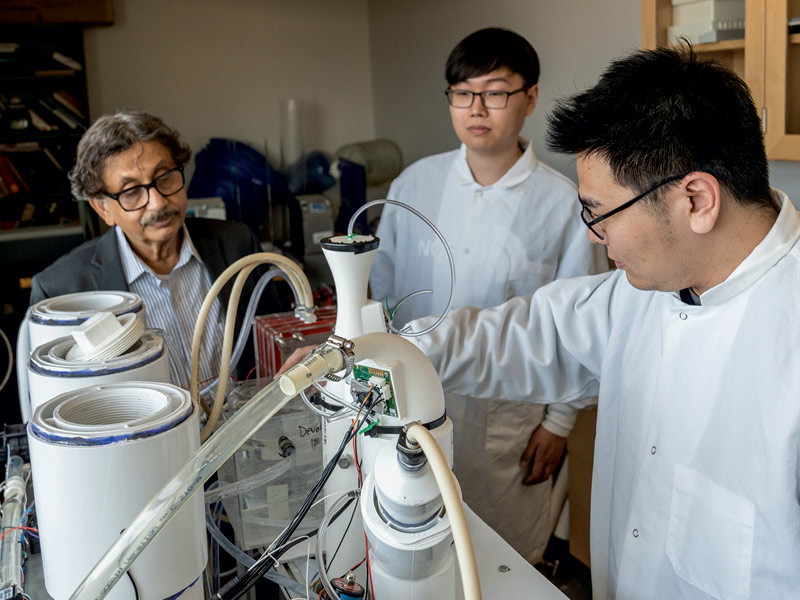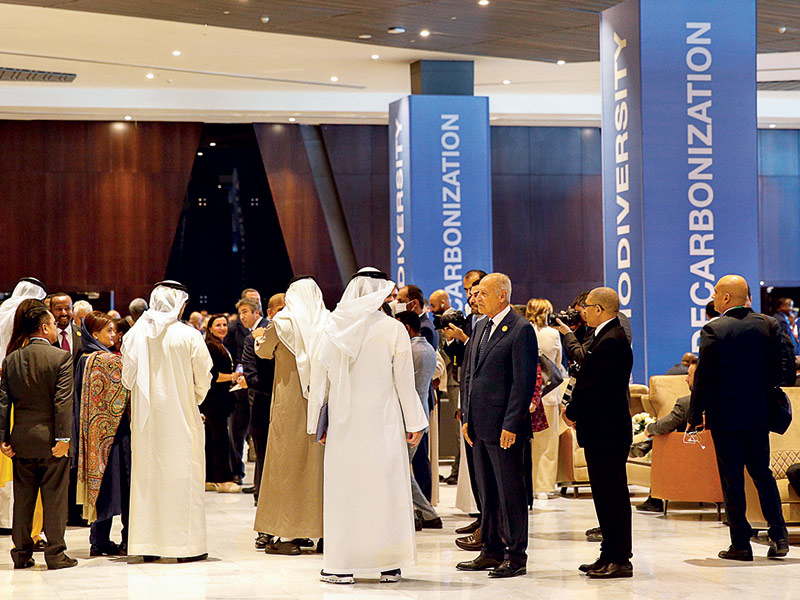
Lehigh Thermal Battery: Supporting renewables through cutting-edge energy storage
In the ramp-up to more widespread renewable energy use, Thermal Energy Storage (TES) has become one of the options for enabling power grids to respond to variable supply and demand conditions. TES systems are like batteries that use temperature shifts to store energy for later use or for use at another location. Such systems capture energy in different ways, and the most commonly used techniques are based on latent and sensible heat transfer.
Researchers at Lehigh, with support from the Department of Energy, have developed a new thermal energy storage system, the Lehigh Thermal Battery, that combines the best of both techniques. The technology is capable of operating with heat or electricity as the charging energy input.

Training Future Energy Leaders
An interdisciplinary team led by Arindam Banerjee, Mechanical Engineering and Mechanics, has been awarded nearly $3 million from the National Science Foundation to train a diverse group of future energy-sector leaders across academia, industry, government, and policy organizations. The award will allow Lehigh to establish a SEED (Stakeholder Engaged, Equitable, Decarbonized) Energy Futures Training Program to provide graduate students with the skills needed to explore, collaborate, and pioneer solutions to the society’s reliance on carbon-based energy sources and energy inequities.
“We will be training graduate students to work at the intersection of energy-related problems,” says Banerjee. “The training would be holistic because the students would also be trained on aspects around policy—to engage stakeholders and bring in stakeholders early in their research program so that the type of solutions that they are working on is actually stakeholder-informed or stakeholder-engaged.”

DeCarbonHIX: A potential sea change in carbon capture
Professor Arup SenGupta has developed a novel way to capture carbon dioxide from the air and store it in the “infinite sink” of the ocean. This new hybrid material, or filter, is called DeCarbonHIX. The research, which demonstrated a 300 percent increase in the amount of carbon captured compared with existing direct air capture methods, has garnered international attention from national media outlets.
“The climate crisis is an international problem,” he says. “And I believe we have a responsibility to build direct air capture technology in a way that it can be implemented by people and countries around the world. Anyone who can operate a cell phone should be able to operate this process. This is not technology for making money. It’s for saving the world.”

Considering 'Carbon Cost'
“Concrete is the No. 1 produced material in the world, and it has a huge carbon cost,” says Spencer Smith ’24G. “That’s because mining the limestone that makes Portland cement used in concrete mix creates tons of emissions.”
Smith, a master’s student in the Department of Civil and Environmental Engineering, is working with associate professor John T. Fox on life-cycle analysis of concrete made using fly ash—a byproduct of coal-burning power plants—as replacement for Portland cement. The project is looking at how much carbon it takes to make a pound of the fly-ash alternative concrete versus a pound of the traditional product.
“Anything we can do to reduce the levels of limestone in concrete will reduce those emissions,” says Smith, who has been interested in environmental engineering and sustainability since high school.
